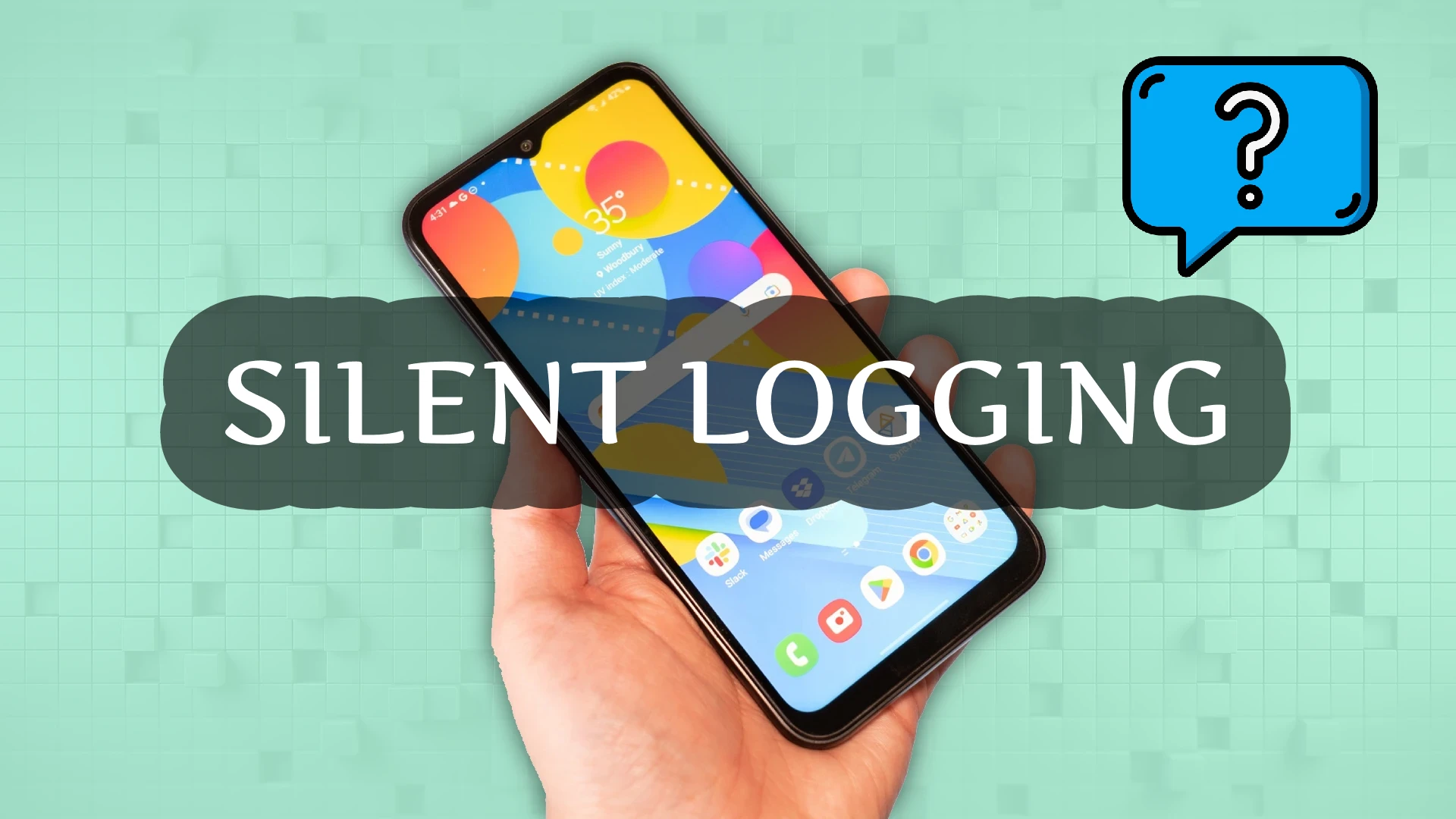Silent Logging is a system application developed by Samsung that operates covertly within the device. It functions without displaying notifications or signs and records various activities and information in the background. This typically encompasses logs of calls and SMS.
Logging entails collecting various details, such as the applications you utilize, the websites you visit, and your device’s geographical location. App developers or system manufacturers may utilize this data to enhance performance, debug issues, or improve the overall user experience.
Nonetheless, this practice raises significant privacy concerns. The primary issue is that your data is being gathered without your explicit consent or awareness. This lack of transparency in data collection poses questions about how the data is used and safeguarded.
In essence, while Silent Logging serves a technical purpose in enhancing device functionality and user experience, it also creates a delicate balance between utility and user privacy.
How does Silent Logging work?
Silent Logging operates through background processes and APIs (Application Programming Interfaces) that allow apps and system components to access and collect data without notifying the user. But how does this work?
SilentLogging.apk interacts with the modem settings of smartphones with VoLTE (Voice over LTE) support. That’s why the package name for SilentLogging is “com.sec.modem.settings”. It also interacts with the device core, which includes the file system, device memory, and network.
More specifically, Silent Logging provides silent access to the mobile Internet and backs up call and SMS logs from your phone to Samsung servers. That way, you can reaccess them if you change your device.
Is Silent Logging safe?
While Silent Logging may have some justification, it raises serious concerns about user privacy. Collecting sensitive information without explicit consent can result in a breach of trust between users and the developers or manufacturers responsible.
In reality, this app isn’t a virus or spyware. Samsung doesn’t employ Silent Logging as a means to track users’ device usage for spying or unauthorized access. It collects specific data for legitimate purposes, such as improving device performance, enhancing the user experience, and enabling the backup of call logs and SMS messages (as already said above).
Such data is usually collected with the user’s permission and following privacy policies. Samsung, as a reputable company, prioritizes user trust and privacy. They have strict policies in place to protect user data and maintain their reputation in the industry.
Is it possible to uninstall Silent Logging?
If you don’t want Samsung to collect your data, you can uninstall Silent Logging. However, I should warn you that this process can be complicated and confusing. There’s a risk of damaging your device software if you’re unsure what you’re doing, so be very careful following the steps below.
Let’s start with enabling USB debugging on your Android:
- Open Settings and navigate to the About menu. Depending on your Android model, you may also find it under another System menu.
- Look for the entry called Build Number.
- Then tap on it several times in a row until a prompt appears saying, “Congratulations, you are now a developer!”. The message may differ.
- Now, go to Developer Options, which should now have appeared.
- Scroll through the list until you find USB Debugging and enable it.
Now the second stage. Since this is a system application of Android, it can only be uninstalled with root access or with ADB from your computer. I will show you the second way as an example.
So here’s what you need to do:
- Download and install ADB on your computer. You can get it from here.
- Once installed, right-click on the ZIP file and extract it.
- In the extracted folder, hold down Shift and right-click on any blank space in this folder.
- Select Open PoweShell window here.
- Connect your Android smartphone to your computer via USB.
- Type “adb devices” in PowerShell and press Enter.
- Accept the prompt on your smartphone to give the computer access.
- Now, enter “adb devices” again. If you see a set of characters and the word “device” beside it, you’ve done great up to this point.
- Finally, type “adb shell pm uninstall –user 0 com.sec.modem.settings” and press Enter.
Once the command finishes processing, you will no longer find Silent Logging on your smartphone.
Does Silent Logging consume a lot of power?
SilentLogging has been reported to cause significant battery drain issues on Samsung devices, ranking second only to the screen and Android system in terms of battery usage. This app utilizes the phone’s modem and highly demands system resources such as CPU and RAM.
Furthermore, it relies on mobile data to establish an internet connection. Consequently, these factors contribute to the rapid depletion of the device’s battery.
Silent logging on Android final thoughts
From a technical perspective, silent logging is invaluable for identifying and resolving system errors, application failures, and performance bottlenecks. It provides detailed insight into device performance, which is essential for optimizing software performance and user experience.
Any OS has a lot of service programs needed to maintain the OS and the user account, as well as to synchronize the account across devices. Therefore, my opinion is that it is pointless to remove system applications, because they are designed for a reason, and they are necessary for the correct operation of the OS.


